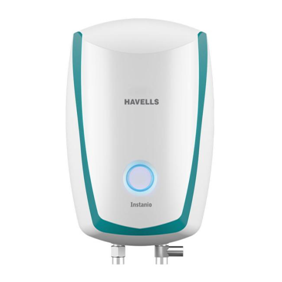
What Temperature Should a Hot Water Heater Be Set At?
Why should Hot Water be set at the right temperature?
The first reason why you should make sure your hot water heater is set at the correct temperature is because it can be dangerous for people to use water that is too hot. A child exposed to 150 degrees Fahrenheit could get a third degree burn within two seconds. The Consumer Product Safety Commission recommends that a water heater be no higher than 120 degrees Fahrenheit or 49 degrees Celsius. Setting your water heater too high can also increase your electricity bill.
Studies have shown that setting your water heater too high or too low is dangerous. The water is not safe for consumption if it’s too hot or too cold. Not only does this make your showers chilly, it can also cause bacteria to grow in your tank. If this bacteria grows, you could get a nasty infection known as Legionella. If the temperature is too low, you’re risking your health and reducing the life of your unit.
One way to make sure that your water heater is set at the proper temperature is by measuring the temperature of the water. You can use a cooking thermometer to see if the water is warm enough to cook with. A water heater’s thermostat should be at 120 degrees to kill bacteria. A higher temperature will kill harmful pathogens more quickly. The Occupational Safety and Health Administration recommends that a water heater be set at 140 degrees Fahrenheit.
What temperature should a hot water be set at?
If you’re using a water heater, you probably know that the temperature is important. But you may not understand why the temperature is so important. In many ways, the setting depends on the amount of elements present in the home. To help you make the right choice, here are a few tips. When setting the thermostat, remember that the lower the temperature, the higher the water will be.
Most water heaters come preset to a temperature of 120 degrees Fahrenheit. This temperature is recommended by the U.S. Department of Energy to keep harmful bacteria from multiplying. A higher temperature kills them more quickly. Occupational Safety and Health Administration recommends a setting of 122 degrees Fahrenheit. If you’re worried about the safety of your family, the highest setting is 160 degrees F.
Most new water heaters have a preset thermostat temperature of 120 degrees Fahrenheit. This temperature is the U.S. Department of Energy’s recommended setting for residential water heaters. However, the temperature may not be as safe for some people. A temperature of 140 degrees may increase the risk of Legionnaire’s disease and bacterial growth in water heaters. In addition to the recommended temperature, you should also consider the health risks of Legionella. The bacteria in the water heater can be a source of serious illness, so it’s essential to avoid a high-temperature setting if you want to avoid a potentially deadly infection.
According to the U.S. Department of Energy, hot water heaters should be set at 120 to 140 degrees Fahrenheit. This temperature can help kill some bacteria, but it may also cause Legionnaire’s disease. The recommended temperature for a water heater is 120 to 140 degrees. These temperatures are safe for single and multiple occupants. Although there are some manufacturers that recommend a lower temperature than others, it is safe for most households.
Most water heaters are factory-set at 120 degrees Fahrenheit. This temperature is recommended by the U.S. Department of Energy to prevent Legionella growth. The Occupational Safety and Health Administration recommends a water heater at 122 degrees to protect people from scalding. Nevertheless, this temperature can cause long-term and medium-term problems in your home.
The Department of Energy recommends a temperature of 140 degrees for homes with multiple occupants. It is also recommended for homes with compromised immune systems to maintain a temperature of 120 degrees. Most new water heaters are set at a preset 120-degree Fahrenheit temperature. The department of energy also recommends a setting of 140 degrees for buildings with multiple occupants.
The Department of Energy and manufacturers of water heaters have differing opinions on the safe water temperature. The department of Energy recommends a setting of 120 degrees for homes with multiple occupants. The Consumer Product Safety Commission and the Occupational Safety and Health Administration also recommends a temperature of 140 degrees for homes with multiple occupants. In some cases, this temperature is more beneficial for people with chronic respiratory illnesses.
Some people believe that the lowest temperature for water heaters is too hot. This is not true. The recommended temperature is between 120 and 140 degrees. You should also consider the type of hot water you are using. A standard insulated tank should be at least 130 degrees. A non-insulated water heater is not safe. A gas pressure regulator can affect your electric bill. If you have a gas appliance, a gas-powered model can damage the wiring.
The temperature of water is important. If you are unable to set the right temperature or are facing problems, contact Plumber In Chandler. The temperature of water should be 120 degrees or 140 degrees. This is a more ideal temperature for many households. The lower the temperature, the higher the risk of a hot water supply that contains Legionella bacteria. The higher the temperature, the lower the risk. In addition, it is safe to turn down the temperature of water. Most homes can turn their water heaters to 120 degrees without much risk of scalding.





No Comment